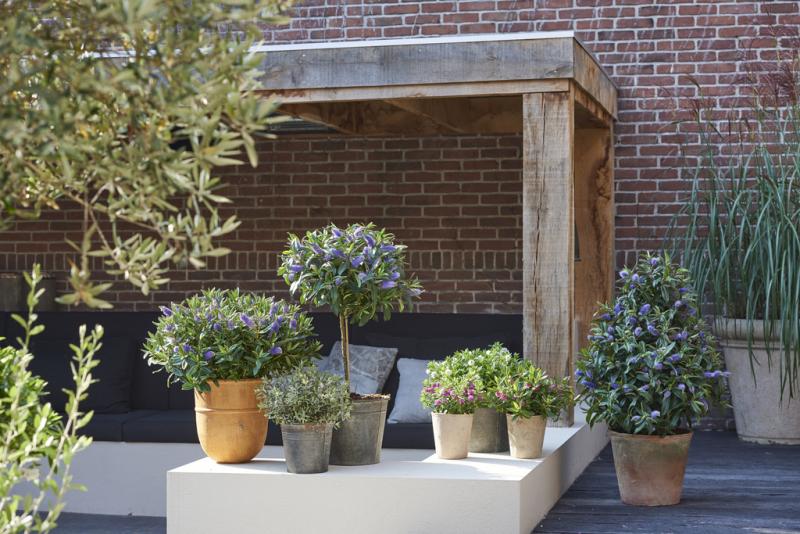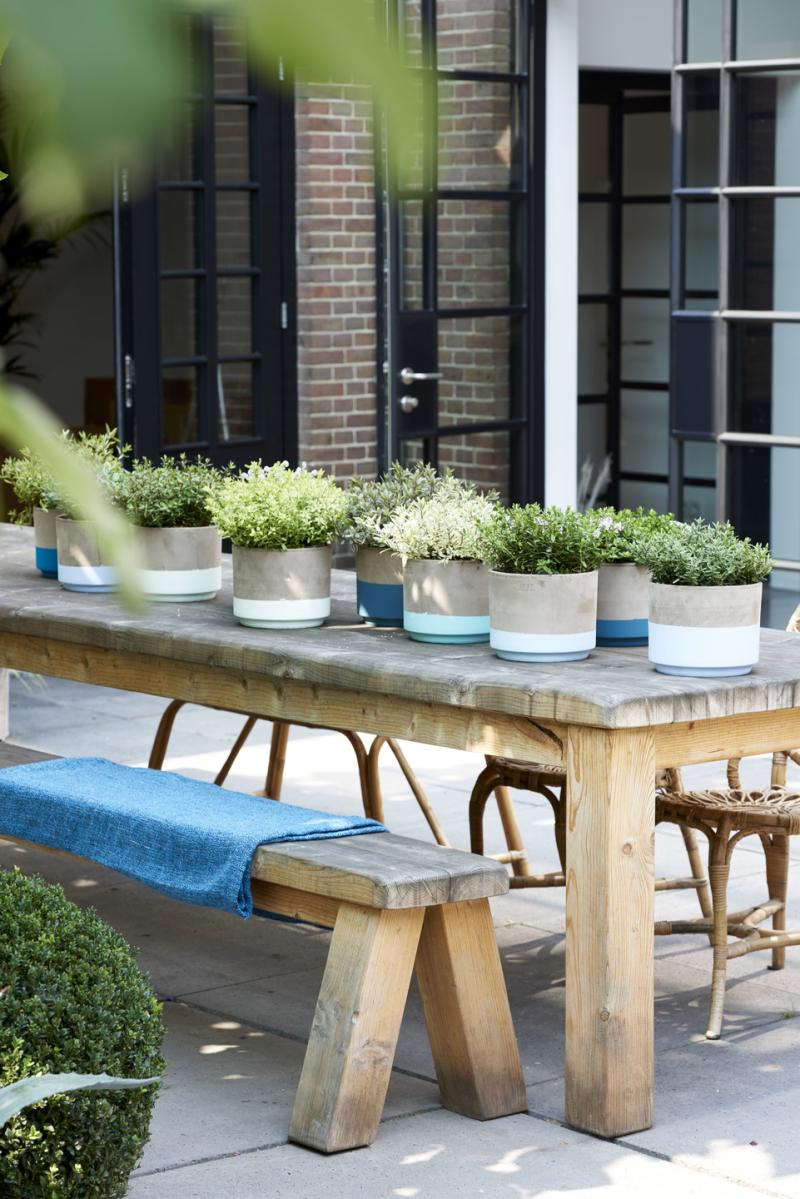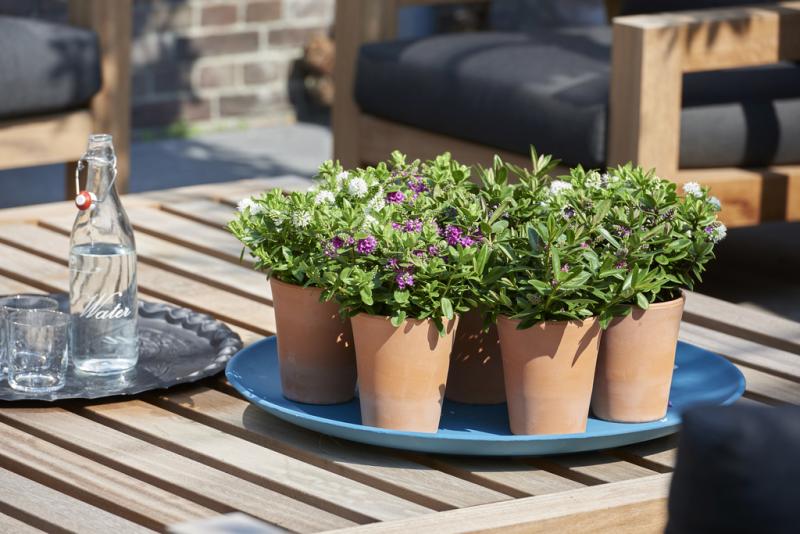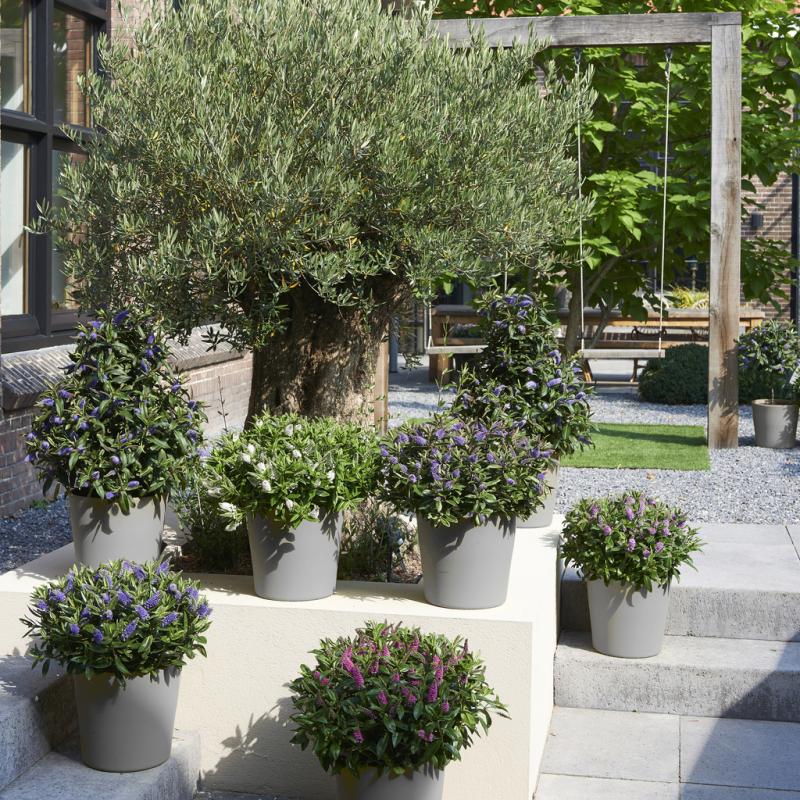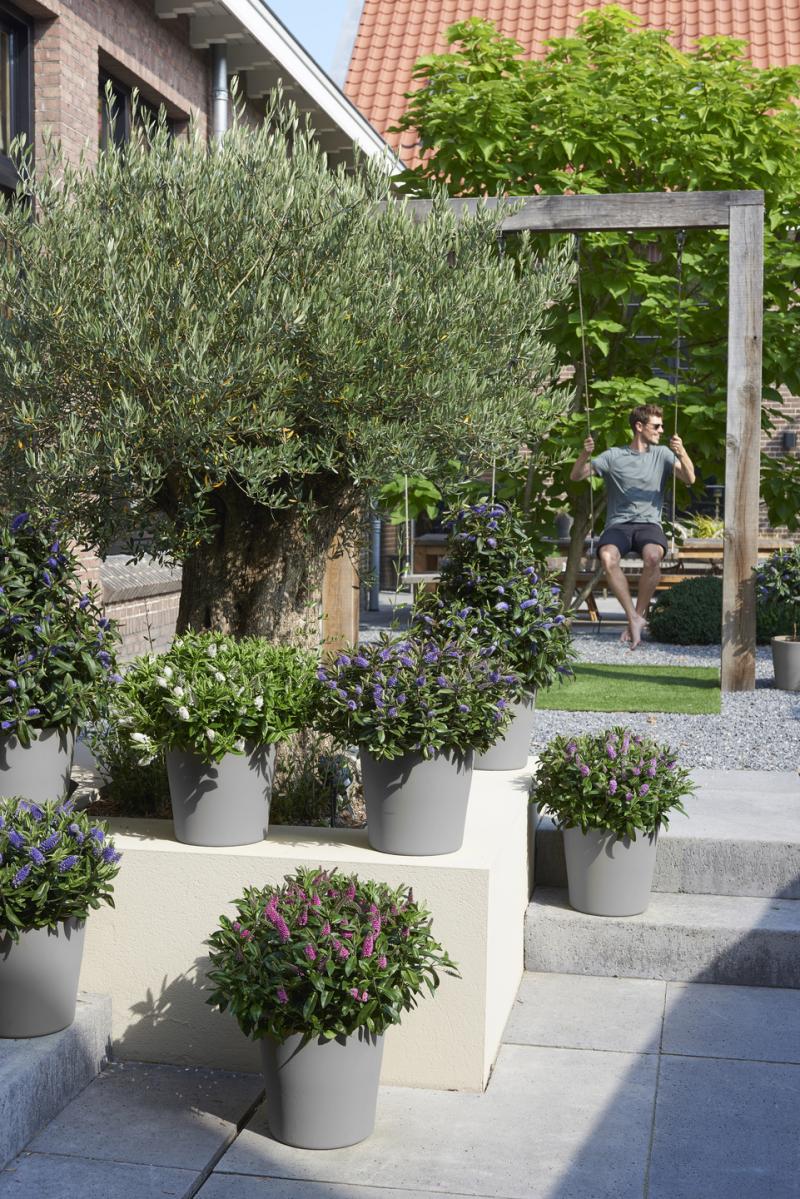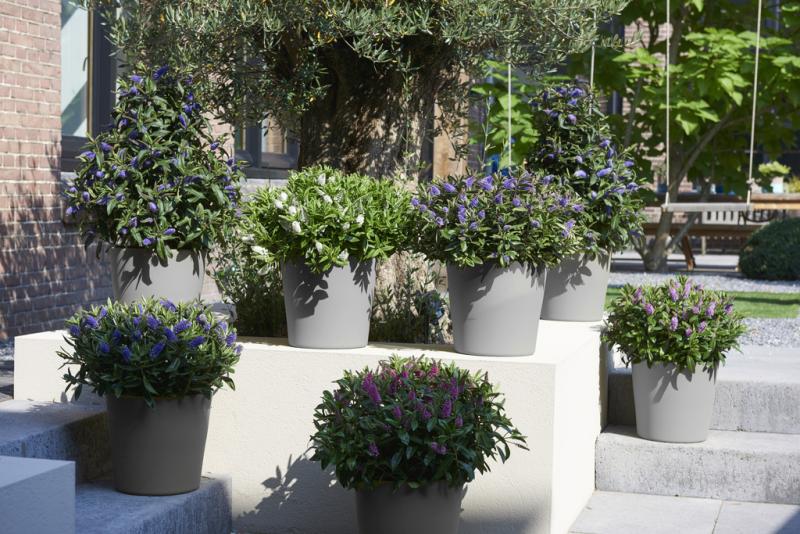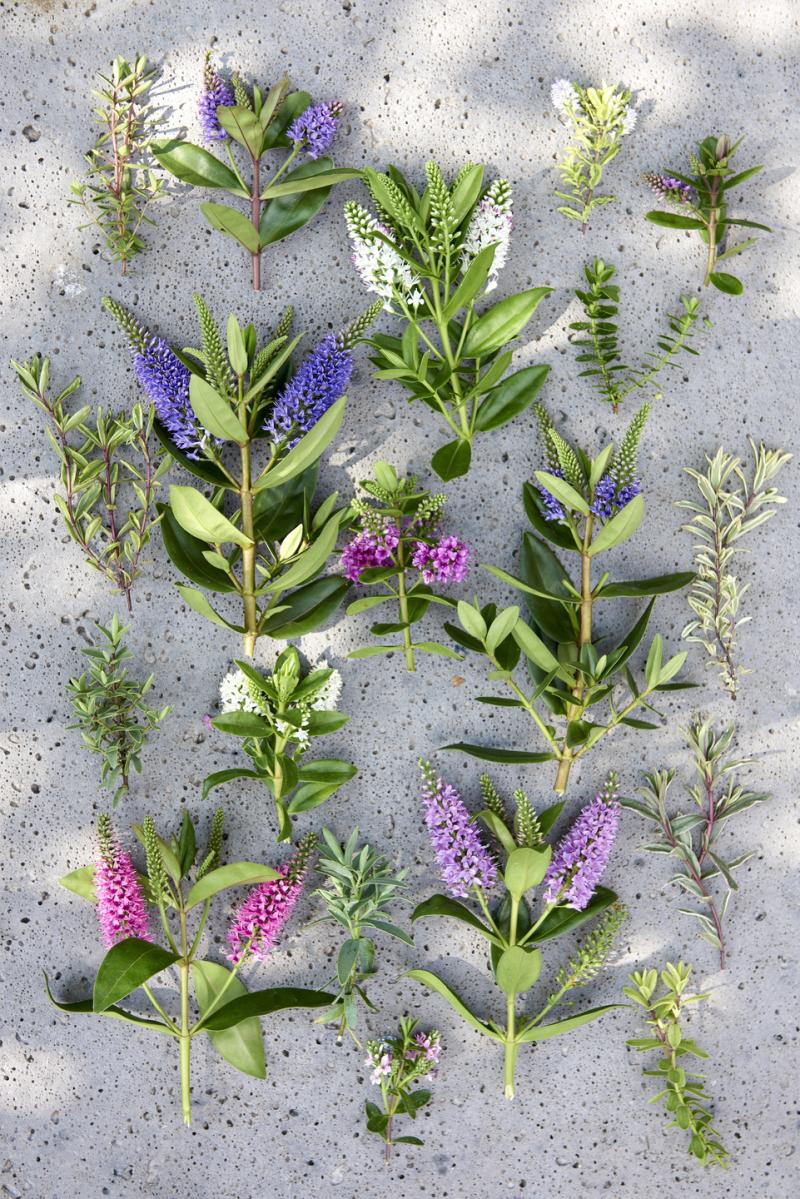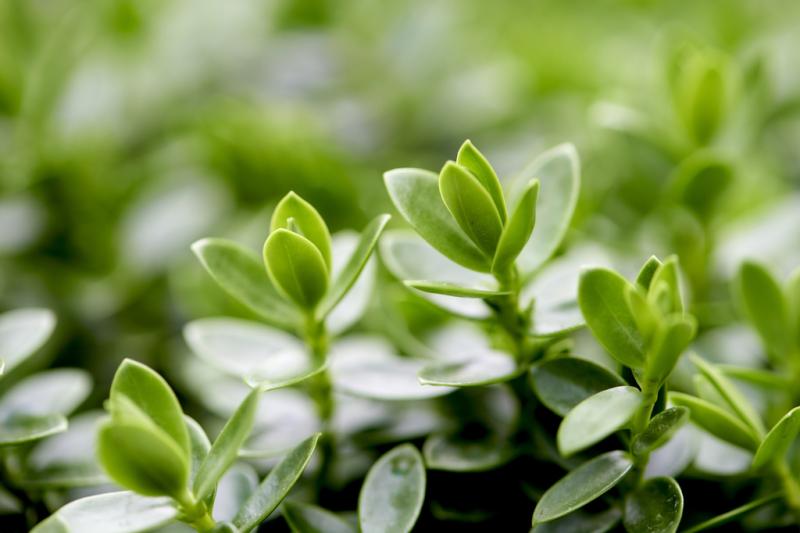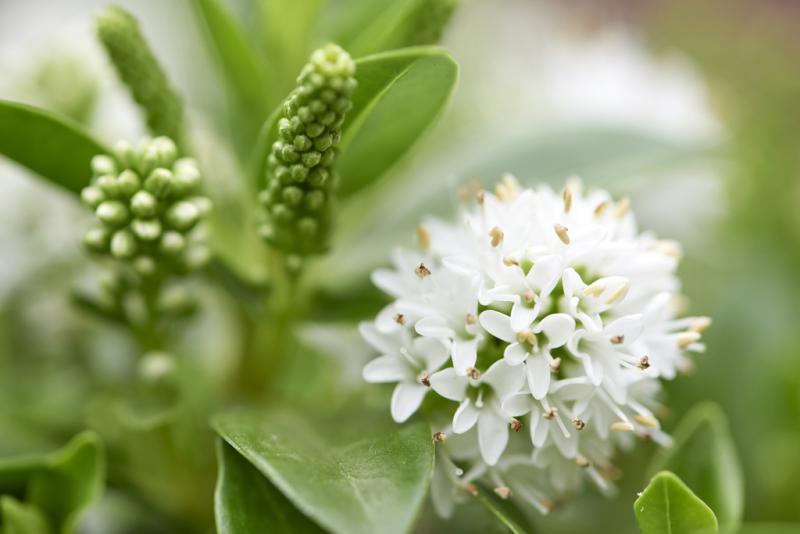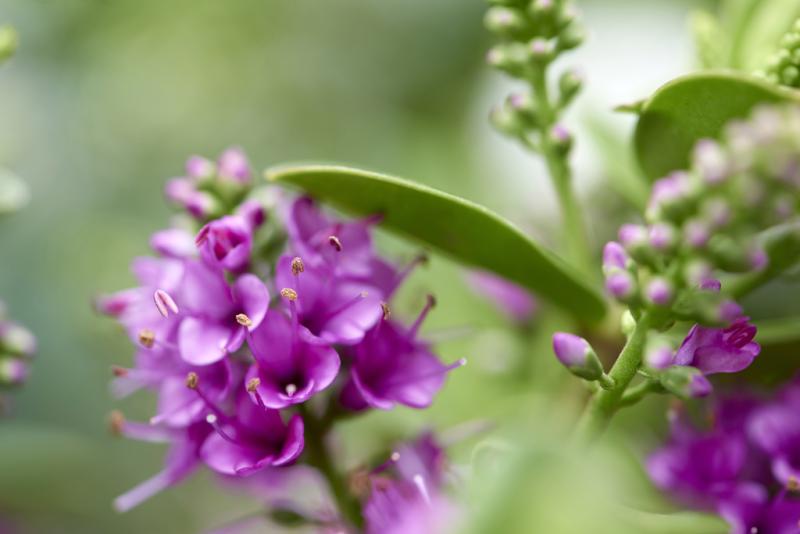Garden Plant of the Month August 2018: Hebe
A late summer party in the garden: Hebe
Hebe (Speedwell Shrub) is the ideal plant for giving your garden and patio boost in the late summer. White, purple, pink, or lilac flowers instantly lend a fresh energy, and Hebe’s foliage varies in colour from pale green to dark green, and very pale grey. In the winter and spring some varieties even have claret leaves. Thanks to the somewhat random structure, the plant has a loose, natural look, and the clusters of flowers are very popular with butterflies and bees. Because Hebe is so versatile, it’s often used in beds and borders, rockeries or as pond planting, but it also works well as a container plant on the balcony or patio. Hebe is evergreen, bringing life to the garden throughout the year.
Range
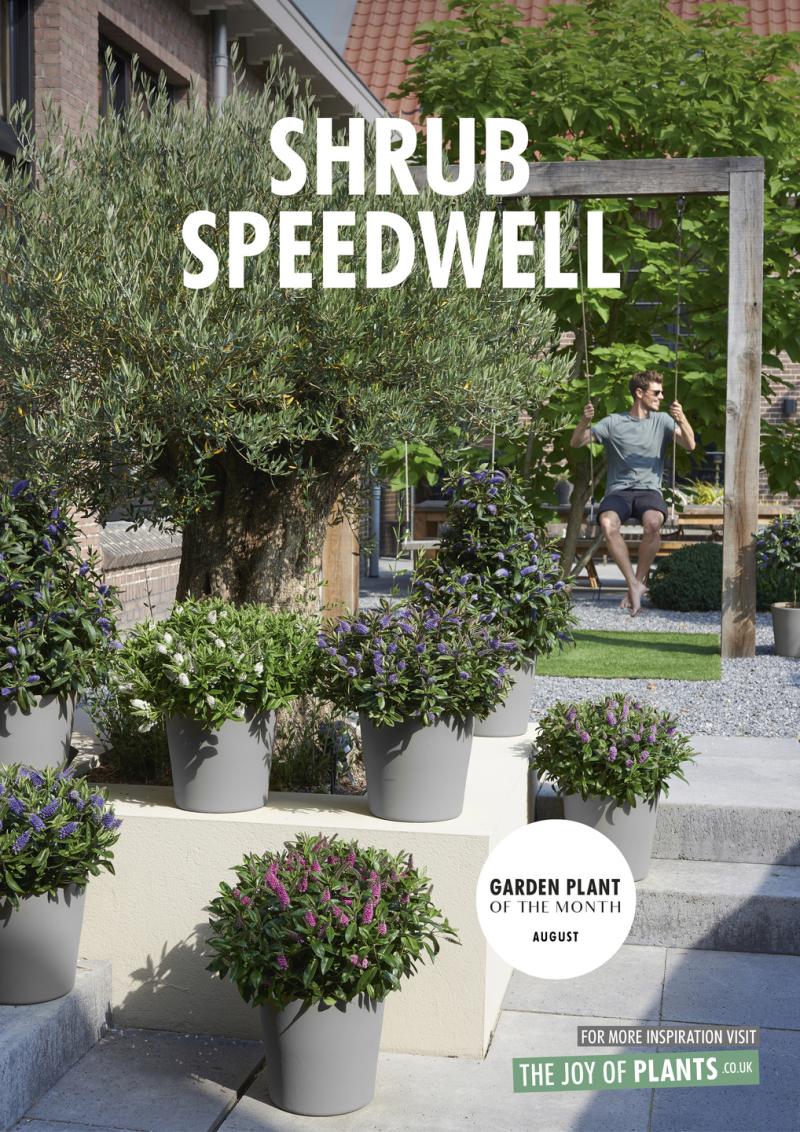
- The largest consists of generally hardy evergreen species with decorative foliage. The best-known are H. ‘Emerald Gem’ syn. Green Globe’, H. ochracea ‘James Sterling’, H. ‘Autumn Glory’, H. pimeloides, H. buxifolia, and H. pinguifolia.
- Completely different but also utterly Hebe is the H. andersonii group, also known as shrubby veronica. This flowers in late summer and autumn, and is particularly popular around 1 and 2 November (All Hallows - All Souls Day).
Hebe trivia
• Hebe travelled to Europe from New Zealand in 1835. The resultant cultivars are able to cope well with European winters thanks to crossbreeding.
• In Greek mythology Hebe, the goddess of youth, was the daughter of Zeus and Hera. She was given as a bride to Hercules.
• Hebe can cope relatively well with salty air, making it an ideal plant for seaside gardens and balconies.
Origin
Hebe grows wild in the southern hemisphere, particularly in New Zealand, but also in French Polynesia, the Falkland Islands and South America. There are around 30 species that are fairly tough: the plant grows both along the coast and in mountainous regions at considerable heights, although they do have smaller leaves there.
What to look for when buying
• Check the balance between pot size, plant diameter and number of buds, and ensure that the plant is free of pests and diseases.
• The plants are cultivated both outdoors and in greenhouses, depending on the species. Good growers ensure that a Hebe grown outdoors is also supplied in a clean pot.
• The larger the plant, the greater the decorative value and the easier Hebe is to look after.
• There should be no dry or dead parts on the plant at the time of purchase.
Sales and display tips
Hebe is the classic late starter in the summer garden: it starts flowering when most plants are past their peak, and carries on until late autumn. That makes it the ideal plant for people who want a cheerful boost for their garden when they return from holiday. Give the plant a prominent position, emphasise the long, late flowering, and decorate the display with butterflies and insect houses and some patio furniture. The deep colours combine well with summery farmers’ market produce for this time of year, such as pots of jam and juice. Together they create a picture of warmth, enjoyment, and lingering in the garden feeling.
Care tips for customers
• Hebe likes a sunny spot, and can even tolerate full sun, but will also thrive in partial shade.
• The plant prefers airy, humus-rich soil.
• Water must always be able to drain. The soil can be left to dry out a little between waterings.
• Give some plant food once a fortnight during flowering. Remove wilted flowers.
• Hebe is fairly hardy, but if there’s a hard frost it’s better to wrap the plant, particularly if it’s a container plant. Shrubby veronica prefers to overwinter in frost-free conditions.
• Cutting back after the winter keeps the Hebe attractive and strong.
Downloadable POS material:
- Poster Hebe
- Banner Hebe
Garden Plant of the Month
The Hebe is the Garden Plant for August 2018. The ‘Garden Plant of the Month’ is an initiative from the Flower Council of Holland. Every month the Flower Council works with representatives of the floriculture sector to choose a plant with an amazing look or unusual characteristics to put in the spotlight. Sometimes it will be a green star that’s highlighted, and sometimes an undiscovered treasure that deserves to be better known and merits a place in the garden, on the patio or on the balcony. Because everyone is happier with more plants.
More information:
Instagram: @thejoyofplants
Facebook: thejoyofplants
Twitter: @thejoyofplants
Thejoyofplants.co.uk
Thejoyofplants.co.uk is an initiative by the Flower Council of Holland to enable consumers to discover that you feel better with plants around you.

